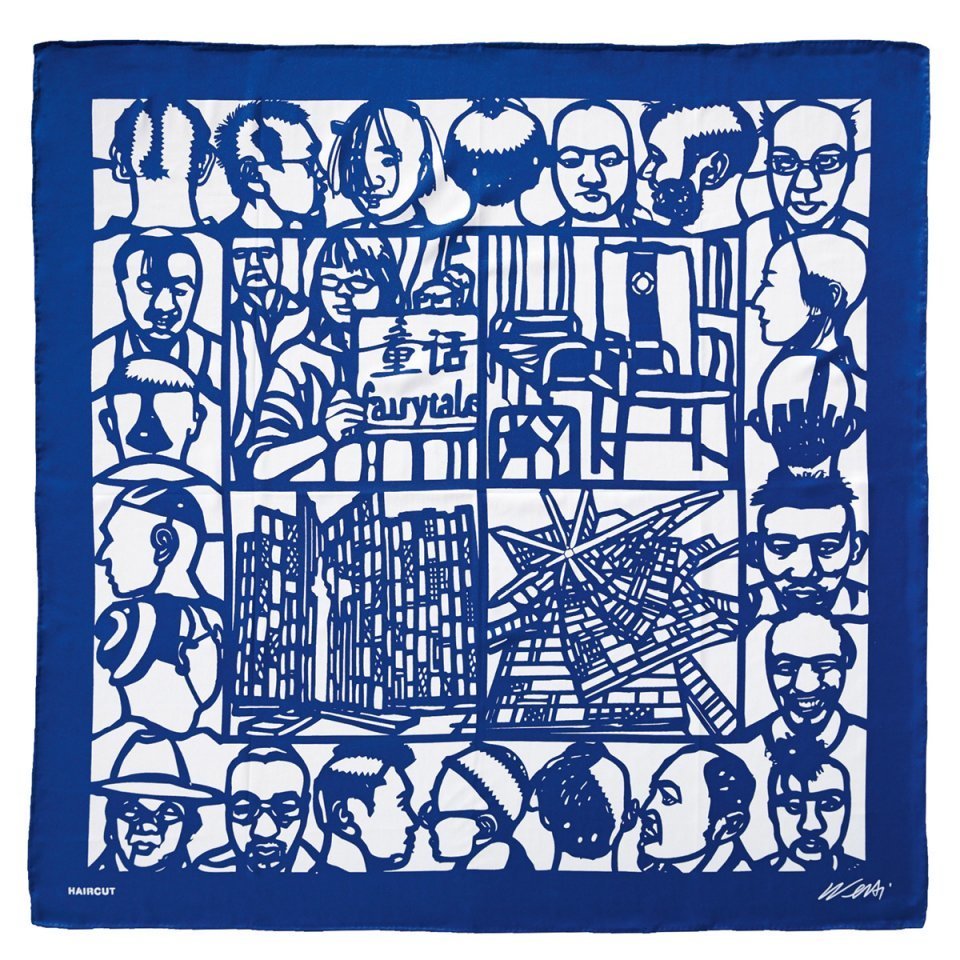
This week’s Nakedly Examined Music podcast features a discussion of songwriting and social protest with Jerry Casale, the co-frontman of Devo since its formation in 1973.
Jerry developed the idea of “devolution” with his friend Bob Lewis in the late ’60s when attending Kent State University, and by his own account was radicalized to political action by the Kent State shootings in 1970. This took the form of what was originally a partnership with Mark Mothersbaugh to create visual art, but this quickly became a musical partnership as well. Mark had used his synthesizer skills to ape British progressive rock, while Jerry was more influenced by blues, having played bass in The Numbers Band and other outfits. The two started recording independently, bringing in Mark’s brother Bob (“Bob 1”) to play lead guitar and later adding Jerry’s brother Bob (“Bob 2”) to play rhythm guitar and more keyboards as well as drummer Alan Myers. Buoyed by heralded live shows in Ohio that included a particularly idiosyncratic and catchy take on The Rolling Stones’ “Satisfaction,” Devo was signed to a major label and released seven albums before coming to a gradual stop in after their album sales declined in the late ’80s given that Mark was doing more and more music for TV and film.
This created a dilemma for Jerry, who has regarded Devo as his life’s work and also regarded it as essentially a partnership with Mark. There have been many Devo live reunions (including one happening now), and there was a full new Devo album in 2010, but that leaves a lot of time to merely collect residuals from “Whip It” and run a winery in Napa.
In reaction to the falsehoods that launched the 2003 Iraq War, Jerry recorded a limited-release solo album under the name “Jihad Jerry and the Evildoers.” This work has now been repackaged to accompany the release of a brand new single (attributed to “DEVO’s Gerald V. Casale”) called “I’m Gonna Pay U Back,” written with current Devo drummer Josh Freese and featuring guitars by Oingo Boingo’s Steve Bartek. As Jerry has always thought of his videos as integral to his musical output, this new song features an elaborately storyboarded and textured video co-directed with Davy Force of Force! Extreme Ani-Mation.
This revival of the Jihad Jerry character created to criticize America’s paranoid post‑9/11 mindset allowed Jerry to visualize a conflict between Jihad Jerry and DEVO Jerry, in the Nakedly Examined Music interview, host Mark Linsenmayer engages Jerry about what these characters amount to and how exactly irony does (or does not) play into them. It was both a blessing and a curse for Devo that their various militaristic and/or robotic personas were so funny. The humor (and fun danceability) involved in songs like “Whip It,” “Mongoloid,” and “Freedom of Choice” meant they could gain an enduring foothold in popular culture, but on the other hand, they’ve been dismissed as merely jokes. Including themselves in the critique, acknowledging themselves as subject to the same human foibles, allowed them to create minimalist, anthemic songs that had a self-conscious stupidity and lampooned the pretensions of art rock. There was a clear connection between the musical styles that Devo sported and the message of this critique: They could all chant in unison that we are all degenerate conformists and use synthesizers and jerky rhythms to act out our dehumanization.
Jihad Jerry, i.e. Jerry wearing a theatrical turban and sunglasses, was given a specific backstory involving escaping Iranian theocracy, determined to use music as a weapon to fight prejudice and ignorance everywhere. Whatever the virtues of this character as a narrative device, it was a marketing disaster, raising ire both with American conservatives and with Muslims who felt they were being mocked, and so the character was retired in 2007. Jerry’s Nakedly Examined Music interview discusses “The Owl,” a track written during Jihad Jerry’s initial run, which confusingly has Jihad Jerry (a character) speaking narratively through the voice of a superhero character “The Owl,” who threatens physical violence on all boorish, selfish American evildoers. Now, given that there’s a character named Nite Owl in Alan Moore’s comic Watchmen, which is explicitly about the mental instability of those who appoint themselves the moral and physical guardians of society, it would be natural to think that irony is playing ask thickly in this new portrayal as it was for the Devo “smart patrol” characters, but in this interview, Jerry urges us to take the critique at face value, as a straightforward condemnation of American arrogance. Does the critique land better without the explicit self-incrimination? Or is the fact that Jihad Jerry is obviously a joke, the Owl as a superhero is obviously a joke, and the fact that we’re talking about characters talking through characters give Jerry Casale enough of a framework to be able to launch very direct attacks without being dismissed as shrill or condescending?
The latter portion of the interview turns to a lesser known Devo track “Fountain of Filth,” which Jerry says he wrote with his brother Bob Casale (who passed away in early 2014) during the recording sessions for Devo’s most famous album, 1980s Freedom of Choice. The song (in the form presented in the podcast) was included in the Hardcore Devo: Volume Two CD in 1991, and was performed live for the first time as part of the 2014 Hardcore Devo Live! tour. In Jerry’s introduction to the song in that concert and in this interview, he describes the “fountain” as all the misinformation and other commercial garbage that makes up much of American media. However, the lyrics of the song are ambiguous: “I’ve got a hunger that makes me want things… Nowhere are we safe… from the appeal of the eternal fountain of filth.” Like one of Devo’s well-known songs “Uncontrollable Urge” (written by Mark without Jerry), this could be a song not actually condemning the temptations, but laughing at prurient hysteria about temptation, i.e. a firmly ironic missive. The technique here is most likely irony that cuts in all directions: One can condemn the overreaction while still condemning the thing it was a reaction to, and a prudish fear of sexuality and full immersion in it are two sides of the same degenerate (i.e. “de-evolved”) coin.
The interview concludes with a 2016 single attributed to Jerry Casale with Italy’s Phunk Investigation that explicitly states this totalizing condemnation/celebration: “It’s All Devo.” Again, the song was released with an elaborate, evocative video, in this case using the art of Max Papeschi and direction by Maurizio Temporin.
Get more links related to this episodes on the Nakedly Examined Music website. Nakedly Examined Music is a podcast hosted by Mark Linsenmayer, who also hosts The Partially Examined Life Philosophy Podcast, Pretty Much Pop: A Culture Podcast, and Philosophy vs. Improv. He releases music under the name Mark Lint.


